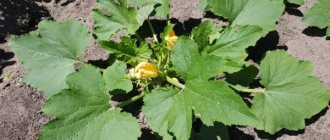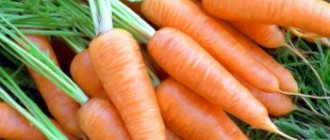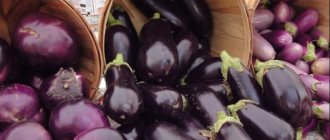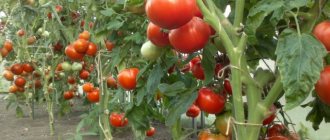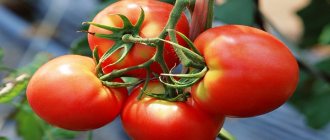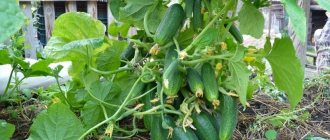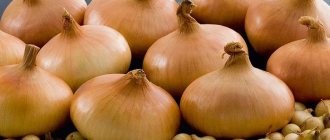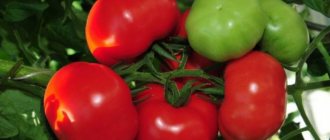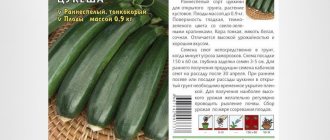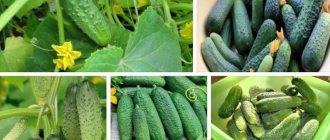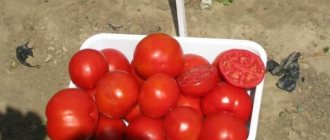What to look for when choosing hot peppers
There are more than 3 thousand varieties of hot pepper, the choice is huge, for this reason, before planting a plant on your site, pay attention to the following aspects:
- If you live in the northern region and the climate is not pleasant with warm days, then certain problems may arise when growing hot seasoning. For hot peppers, the hotter and drier the climate, the better. This circumstance directly affects the bitterness of the fruit. If you plant a crop in northern latitudes, then do not be surprised that the taste characteristics will be lower.
- When choosing seeds, take into account the SHU indicator; a similar mark should be on the package. She will tell you about the hotness of the pepper; the higher the SHU value, the more bitter the fruit grown on the plot will be.
- When purchasing seeds in bags on trays, carefully study their characteristics; often such “products” in reality do not meet the stated requirements. Check with the seller for information and read reviews. This will help to avoid mistakes in the process of cultivating plants.
- If you plan to grow peppers in open ground without resorting to a greenhouse, then choose suitable varieties. Better are those that fully ripen in 90-100 days. If you wait longer, you are unlikely to get a good harvest.
- Study the rules of plant care, this will help minimize effort, and at the same time, in the end, reap a good harvest. Do not forget about watering, fertilizing and processing - these are general recommendations for caring for plantings.
- Check the quality of the soil, use purchased material for planting seedlings, this will increase the germination of seeds.
- Do not forget that each variety has its own characteristics, this can include the yield indicator, as well as the early maturity of the variety.
Every gardener has his own “favorites”. Species that are most often planted on the site. Therefore, do not be surprised that some summer residents continue to cultivate certain varieties of vegetables and spices for many years. Experiments may end in failure, but “old and proven” cultures are unlikely to fail.
Recommended crops for planting in open ground
When planting a plant in the ground, rather than in greenhouse conditions, you may encounter certain problems. To avoid failures and get a decent harvest of hot pepper, we suggest making a kind of rating and identifying the leaders.
Chinese fire
Detailed description of culture and its benefits:
- a bush 60 centimeters high grows on the site;
- cone-shaped fruits weighing 70 grams ripen on it;
- peppers ripen quickly, 100 days pass from the moment the sprouts appear to the harvest;
- the plant has good immunity and is resistant to diseases and pests;
- one of the hottest varieties.
Fire bouquet
When buying hybrid seeds, keep in mind that it has the following characteristics:
- The bright red fruit ripens on a powerful bush, 50 centimeters high.
- Peppers are cone-shaped and weigh up to 25 grams.
- They have an interesting taste - bitter, with a bright spicy aroma.
Thai dragon
You can grow the crop even on a windowsill, in a pot, but if you plant it in the ground, the result will be surprising. Description of the plant:
- the bushes are tall and powerful, reaching a height of 1.5 meters;
- they are literally strewn with small but sharp fruits;
- their weight is 20 grams, the length of the pod reaches 8-10 centimeters;
- The harvest can be harvested 105 days after the appearance of sprouts or planting of seedlings in the ground.
Adjika
This plant will surprise the gardener with the following characteristics:
- The bush reaches a meter in height.
- Pleases with the appearance of fruits with a bright red hue and pleasant spice.
- The peppers are bitter, and the variety is classified as mid-season.
Jalapeno
The harvest from this plant begins to be harvested after 90 days. By this time the peppers are turning red. They ripen on bushes 1 meter high. They have good characteristics. The average fruit weight is 20 grams.
Indian elephant
The taste of the fruit cannot be characterized as hot, but rather as mildly pungent. The peppers are large, weighing up to 40 grams. Upon reaching technical maturity they have an emerald tint, then turn red.
The plant bears fruit abundantly, but in order not to have a negative impact on the yield, plant no more than 4 bushes per 1 square meter of land.
Hungarian yellow
Culture has a number of features and is different:
- compact, average height does not exceed 55 centimeters;
- Initially, plum-colored fruits are formed on the bushes; as they mature, they acquire a yellow color;
- peppers reach technical maturity 105 days after the sprouts appear;
- The crop loves moisture and successfully bears fruit with abundant watering.
See also
When to plant peppers in open ground, terms and conditions
Read
Karabas Barabas
Mid-early variety of hot pepper for open ground. The growing season is up to 130 days. The plant is quite large, can reach 80-90 cm in height. The crown is semi-spreading, with slightly wrinkled leaves. About 20-25 fruits can ripen on one plant. The culture easily tolerates drought.
The pepper is formed narrow, very long, cone-shaped. Weight, depending on the specimen, varies within 90 g. The skin is smooth, glossy, dark red in color in the biological phase of maturity. Wall thickness is about 4 mm.
Related article:
Secrets of a huge pepper harvest
Karabas Barabas has a very bitter, burning taste. It can be used as a spice in everyday cooking and also for canning. However, it should be remembered that even a small amount will give the dish a strong spiciness. Therefore, it should be used with caution, especially for people who are unfamiliar with such spices.
Early ripe hot peppers
Such crops are pleasing because they “bring” the harvest early. If you plant them in a greenhouse, you will be able to increase the performance. Such plants are afraid of frost, so they are rarely planted in open ground, only in regions with a warm climate.
Miracle of the Moscow Region
From one square meter of planting it will be possible to collect up to 4 kilograms of crop. The fruits are not particularly spicy, but will surprise you with their specific aroma.
The bushes do not require shaping, since there are not so many leaves on them. The number of peppercorns on a bush does not exceed 20 pieces. They are large, up to 25 centimeters long and weighing up to 40 grams.
Dragon tongue
The hot pepper with a pleasant aroma will delight and surprise you with its spiciness. The bushes are not very tall, reaching a meter. The variety is unpretentious and is suitable for beginners who have not yet fully learned all the intricacies of caring for vegetables. Due to its unique characteristics, Dragon's Tongue is used on an industrial scale to create paprika.
Homer's pepper
When planted in a greenhouse, it actively bears fruit from August to October. The fruits are not particularly spicy and reach a weight of 40 grams. Most often, peppers of this variety are used to create preparations, but they are also used as a seasoning.
Impala
This variety can be characterized as follows:
- Compact bushes 70 centimeters high, actively bear fruit.
- Cone-shaped peppers with a bright spicy taste and pleasant aroma appear on them.
- The culture is resistant to diseases and pests, and also tolerates drought and heat.
Witty
Resistant to temperature fluctuations, it is planted in the ground and grown in greenhouse conditions. The wit is actively bearing fruit, and the peppercorns are growing upward. The bushes are distinguished by a spreading crown and have good immunity. The wit is resistant to drought, but lack of light can cause crop failure.
elephant trunk
Suitable for greenhouses and greenhouses. When the peppers reach light green color, they turn scarlet. The elephant trunk is resistant to various diseases and is very easy to care for.
Tula
It bears fruit early and has a good yield. The plant produces large, fleshy peppers with a classic, spicy taste.
Hungarian yellow
This is a large early variety of hot pepper. The bush is low-growing, compact, closed with large leaves. Requires formation and fixation to support. For planting, seedlings should be used at the age of 60-70 days. It is planted in loose fertile soil according to a 40x50 cm pattern. A maximum of 3-4 plants should be placed per 1 m2. Productivity is about 7 kg/1 m2.
Related article:
Growing big and tasty peppers
The fruit is cone-shaped, elongated, sunny in color. Used in home cooking and for pickling. Average weight – 60 g. The surface of the skin is smooth and glossy, the wall thickness is 4 mm. The taste is moderately hot.
Medium and late ripening varieties
If we talk about mid-season crops, they are considered universal, that is, peppers can be grown both in the ground and in greenhouses. Such vegetables are not afraid of frost, but temperature changes can change the yield for the worse.
Late-ripening crops are suitable for regions with an unfavorable climate. They ripen for a long time, bear fruit actively, and such vegetables are unlikely to be “scared” by bad weather.
Falcon beak
It is distinguished by its bitterness. It can be planted and grown at home, since the bushes are very compact. The peppers on the branches are small, weighing up to 10 grams.
Vizier
The fruits of this plant are used to create preserves, they are dried and used as a spicy seasoning. Vizier is grown indoors, it bears fruit well and will certainly surprise the summer resident with a good harvest. The variety is classified as late-ripening.
Astrakhan
It is distinguished by its pungency; Despite the late ripening period, the plant will surprise you with its yield. The unpretentiousness of the culture and resistance to temperature changes will delight the summer resident.
Astrakhan is suitable for cultivation in various climatic conditions, which does not have a significant impact on the process of its fruiting.
Ram's horn
The plant received its unique name because of the bizarre shape of the pod. It seems to be twisted into a ram's horn. Vegetables of this type are unpretentious in terms of care, they tolerate drought well, and the taste of the fruit improves and they become sharper. With plenty of watering, the pungency goes away. If moisture stagnates, the crop may die.
Cayenne
Used in the food industry. This species has a pungent taste and pleasant aroma. During the growing process, the bushes will have to be tied up, and timely applied fertilizers will increase the yield. The variety is grown mainly in greenhouses; it is less suitable for open ground. If desired, you can cultivate it on a windowsill or in a pot.
Tabasco
Attention! This variety of culture is known for its sauce of the same name. The fruits are not large in size; their burning taste allows them to be used in cooking.
Let's get acquainted with the main features of the variety:
- resistant to diseases and temperature fluctuations;
- productivity – high;
- The pulp of the vegetable is juicy and fleshy.
Dragon Flame
A variety of early varieties of capsicum. The harvest ripens in 105-115 days. A bush of average height up to 70 cm. The crown is semi-spreading with small leaves. The productivity of one plant is 1.2-1.5 kg.
The fruit grows narrow, cone-shaped, elongated up to 20 cm in length and very fleshy. The average specimen weighs about 70 g, and some can grow up to 110 g. At the stage of technical maturity, they become green, and at the biological stage, scarlet. The skin is glossy and slightly wrinkled. Wall thickness – 4-5 mm.
Related article:
What is the best way to grow pepper seedlings at home?
The flesh is hot with a spicy aroma. Often used as a culinary seasoning, as well as for preparing winter preparations and marinades. Care must be taken when consuming, as even a small amount of Dragon Flame will make the dish very spicy.
Crops for greenhouse conditions
By growing peppers in greenhouses, you can get a good harvest. To a greater extent, we are talking about crops that do not tolerate temperature changes well and are not resistant to frost.
Pepper Shakira
It is used mainly for pickling; the fruits have no bitterness and the aroma is weakly expressed. The bushes reach half a meter in height. The weight of the pepper does not exceed 50 grams, there are few seeds in the pod. Shakira is a hybrid, and it appeared relatively recently.
Red fat man
Has the following characteristics:
- The fruits are large in size, reaching a weight of 100 grams.
- The plant blooms for a long time - up to 5 months, for this reason it is grown in a greenhouse.
- In our country, the Red Fatty is cultivated in the southern regions.
Advice: try growing the plant in greenhouse conditions, but subject to all rules and care recommendations.
Ram's horn
A hot large pepper that has a spiral shape, reminiscent of a ram's horn. Mid-late view. The growing season lasts about 130-140 days. The bush is branched, compact, low. It can grow up to half a meter in length.
Related article:
How to grow and harvest hot peppers: step-by-step instructions
Ram's horn grows well in loose, fertile soil. Shows good development both in open beds and in greenhouses. Reacts negatively to temperature changes. Tolerates waterlogging. However, in case of prolonged exposure to high humidity, its taste becomes less bright.
The fruit grows glossy, long and thin, approximately 1.5 cm in diameter and 25 cm in length. The weight of most specimens is within 20 g. The wall thickness is relatively small - up to 2 mm. In the phase of technical maturity it acquires a green color, in biological maturity it becomes deep red. The pulp is very hot, with a pleasant aftertaste and pronounced aroma. Ram's horn is suitable for fresh consumption, for making spices and winter preparations. Some gardeners prefer to immediately preserve the still green fruit, since in the process of reddening its skin becomes denser.
The yield of one bush is about 60-70 high-quality specimens. More than 3 kg is harvested from 1 m2 in greenhouse conditions.
What to choose for indoor growing
It is no secret that vegetables can be grown in the absence of specialized conditions. This rule applies to hot peppers, since they can even be cultivated in pots. Which, however, does not exempt you from following the rules for caring for the plant.
See also
Can iodine be used as a fertilizer for peppers and processing rules?
Read
Peter's finger
You will be surprised by the shape of the fruit, reminiscent of a finger. The variety is classified as a hybrid and was bred in America. The vegetable is easy to care for, compact and bears fruit well even on the windowsill.
Chilly Willy
A rare and very specific type of hot pepper, which has good characteristics. Purchasing seeds of this crop in Russia is extremely problematic. While the plant produces medium-sized fruits with excellent organoleptic characteristics.
Indian summer
You can grow a vegetable on a loggia, in a box or pot, and it will grow and bear fruit for several years. Small-sized bushes 40 centimeters high are strewn with peppercorns of various colors. Ripe, red, used without heat treatment.
Goldfinger
It is mainly grown as an ornamental plant, but the fruits are not used. The culture is small in size, the bush reaches a height of 25 centimeters, and the peppercorns are small - up to 3 centimeters.
Goldfinger attracts with its appearance; spreading bushes with an abundant crown will decorate a loggia or window sill in an apartment.
Filius blue
The variety can bear fruit in an apartment for a whole year. It produces fruits with a purple tint; as they reach maturity they turn red. Peppercorns can be eaten.
But in order for them to appear on the bushes regularly, the plant will have to provide the following conditions:
- water the crop regularly, but moderately;
- avoid lack of light, it can be harmful;
- monitor air humidity.
Varieties of bitter-sweet peppers
There are others, they have specific taste characteristics, which attracts gardeners and gardeners.
Chilean heat
Used in cooking, as a seasoning for creating sauces and meat dishes. The plant requires watering, and it is carried out in the evening so that the air humidity does not increase.
Characteristics of the Chilean heat:
- It bears fruit well, the first peppercorns appear on the bushes after 100 days, which makes it possible to classify the crop as early ripening.
- The pods are medium-sized, glossy, slightly curled towards the bottom. The length of the pods does not exceed 20 centimeters.
- Suitable for greenhouses and open ground, but it is better to plant seedlings. Seed germination is good.
elephant trunk
The type of culture can be characterized as follows:
- medium-sized bushes rarely reach a height of 80 centimeters;
- actively bear fruit, with proper care and maintaining air humidity;
- have a pleasant aroma and taste, which makes it possible to use the Elephant trunk for creating preparations.
Crown
The plant will surprise the summer resident with an interesting shape of fruits that resemble a crown. Peppers are classified as mid-season and are planted in open ground and in greenhouses. You will be pleased with the high yield; you can collect up to 50 fruits from one bush. The pulp has a sweetish taste, reminiscent of the taste of fruit.
Properties
The use of hot pepper in cooking, as well as in medicine and cosmetology is due to its properties. Its fruits, in addition to the alkaloid capsaicin, contain a whole range of various vitamins, essential oils, minerals and enzymes.
Due to the large amount of vitamin C, pepper is considered a powerful antioxidant that slows down the aging process of the body. Capsaicin, lycopene, vitamin P prevent the development of atherosclerosis, various tumor diseases, and thrombosis.
Eating pepper (of course, in limited quantities) is necessary to improve the functioning of all internal organs and normalize metabolism. Pepper helps improve vision, the condition of the skin, nails, hair, and allows you to increase hemoglobin levels if necessary.
ATTENTION! Hot peppers should not be consumed by people suffering from kidney and liver diseases, as well as ischemia, ulcers, and gastritis.
Hot pepper is a spice that has a very beneficial effect on the functioning of the pancreas and the entire gastrointestinal tract. Spices increase appetite, at the same time, pepper is used in various diets for weight loss. It is widely used in various folk recipes and is also included in medicines.
But we must keep in mind that the degree of spiciness of the fruit can be different, so when always trying such peppers, you must be careful and careful. There are varieties in which the walls of the fruit are even sweetish, and all the pungency is “hidden” in the seeds and partition; there are peppers that are completely hot. When adding pepper as a seasoning, you must always know the variety and its pungency, otherwise you may get a burn to the mucous membranes. And never wash down the “fire” in your mouth with water (if you’ve tried very hot pepper), it won’t help. It is better to drink milk, drinking yogurt, and eat a piece of bread.
Yellow-fruited varieties
Vegetables of this color can also be cultivated on the site; the shade does not have a serious effect on the organoleptic properties of peppers.
Hungarian yellow
The crop ripens early and bears a lot of fruit. It does not differ in large dimensions. The taste of the fruit is sweet, with a characteristic note of piquancy. The shape of a peppercorn resembles a cone, tending to grow downward.
Jamaican yellow
The shape of the fruit and other properties of the vegetable will surprise you, let’s study them:
- Suitable for planting in the ground, it can also be grown in a pot, but this significantly reduces the yield.
- The bushes reach a meter in height, bear a lot of fruit, and do not require special care.
- The taste of the fruit cannot be called burning.
There is a variety of pepper that produces flat, red fruits. They taste spicy.
The best variety for pickling
Often vegetables collected on the site are used to create preparations. You can also preserve peppers.
Tsitsak
This is a heat-loving crop that requires attention, produces red fruits with a burning taste and a pronounced aroma. The bush does not exceed 60 centimeters in length. Due to its characteristics, the vegetable requires regular feeding and moderate watering. Otherwise, the yield rate decreases. Peppercorns are harvested as they reach technical maturity.
Small peppers
These types of crops are characterized by small fruits, which does not have a serious effect on their pungency. Among the representatives of the variety there is a bright leader. Let's consider its characteristics.
Coral
This type of red pepper, with medium-sized fruits that have a hot taste, will delight you with a harvest in a short time. Peppercorns ripen quickly, reaching ripeness in 80 days.
Let's list the virtues of a leader:
- taste characteristics are at their best;
- can be planted in open ground, a greenhouse, and even grown on a windowsill;
- attracts decorativeness of bushes, productivity and pungency of fruits.
Advice: it is better to plant seedlings, and carry out all procedures in mid-March, early April.
General characteristics
Hot peppers are famous for their fiery, spicy taste, as well as for their beneficial properties. Therefore, in some countries it is even considered a source of youth and longevity. It came to Europe during the time of Christopher Columbus, and still remains the most sought-after spice.
In the process of spreading the culture, breeders developed more and more new varieties for cultivation in one or another climate zone. Today, thanks to the work of scientists, more than a hundred varieties of hot peppers are included in the State Register of the Russian Federation, which are zoned for all regions of the country. Most are suitable for growing in open ground, as well as in greenhouses of various designs.
Related article:
Top 5 most productive peppers for stuffing
Fruits may differ in color, shape, taste, ripening period and other characteristics. Therefore, to choose the best variety, it is recommended to consider the following factors:
- the pungency index is assessed on the SHU (Scoville heat units) scale - the higher it is, the spicier the product;
- the pungency depends not only on the varietal characteristics, but also on the growing conditions - in a dry climate it is possible to obtain a more pungent taste;
- the growing season of the crop should be compared with the length of the gardening season;
- It is better to buy seeds from trusted suppliers or certified gardening stores to avoid counterfeiting.

